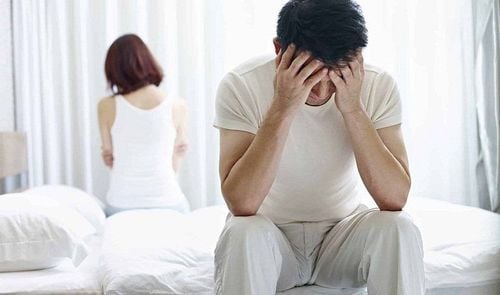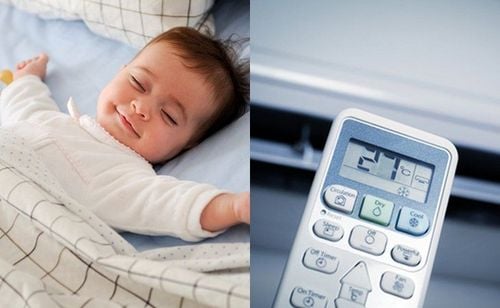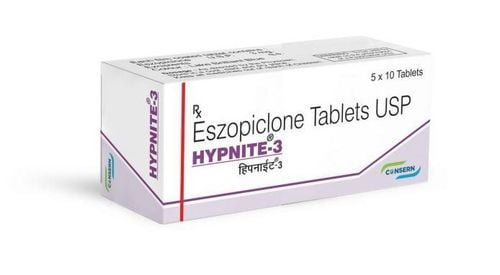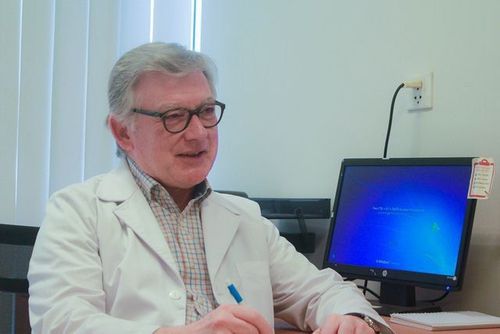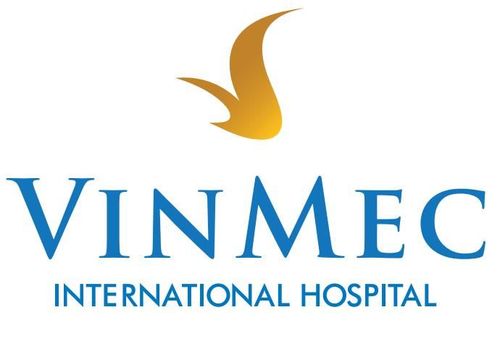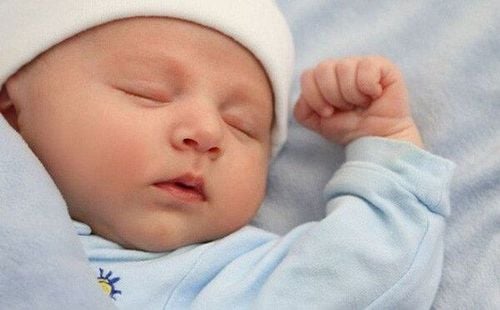This is an automatically translated article.
Nocturnal choking in school-age children can be a frightening, painful and disruptive health condition that seems to come on suddenly. In certain cases, it can even be life-threatening. Pediatric Obstructive Sleep Apnea is a sleep disorder in which your child's breathing is partially or completely blocked repeatedly during sleep.The most common underlying cause of obstructive sleep apnea in children is tonsillitis. Early diagnosis and treatment are important to prevent complications that can affect a child's growth, cognitive and behavioral development. In this article we will provide helpful information for parents about sleep apnea in school-age children.
1. Overview of Sleep Apnea Syndrome
Sleep apnea is a symptom of a sleep disorder in which a child's breathing is interrupted while the child sleeps.There are two types of sleep apnea, obstructive sleep apnea – OSA (more common) and central sleep apnea – CSA (less commonly occurring when the part of the brain responsible for breathing is inactive) normal). In obstructive sleep apnea, the child tries to breathe but cannot because the airway is blocked or constricted. In central sleep apnea, the child breathes less deeply, so they will have short-term apnea.
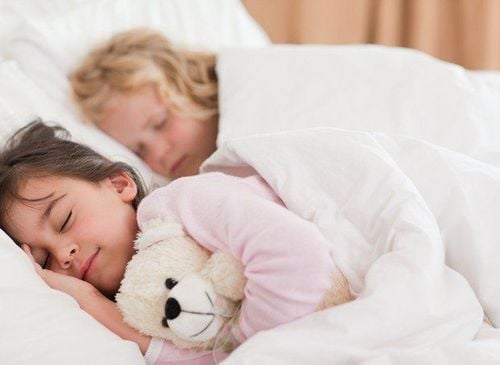
Ngưng thở khi ngủ là tình trạng hơi thở của trẻ bị gián đoạn trong khi trẻ ngủ
2. Causes of sleep apnea in children
2.1. Obstructive respiratory arrest
Some of the main causes of this phenomenon include:Enlarged tonsils and adenoids: The tonsils and adenoids (glands located at the back of the throat) are part of the immune system. The tonsils can be enlarged due to genetics, infection, or frequent inflammation. When these glands swell or collapse, they block the airways, making it more difficult to breathe during sleep. Family history of sleep apnea. Childhood obesity: Sleep apnea is common in obese children, accounting for 60%. Risk factors include: small maxilla, use of sedatives or opioids, weakness of tongue and throat muscles; have Down syndrome, sickle cell disease, abnormalities of the skull or face, cerebral palsy. Having nasal allergies, being around adult smokers, and having a family history of obstructive sleep apnea have also been found to be risk factors for obstructive sleep apnea in children.
2.2. Central apnea phenomenon
Central sleep apnea is associated with rare genetic disorders in children, such as congenital central hypoventilation syndrome. It can also occur when a child has a weak health condition that interferes with the parts of the central nervous system that control breathing. Babies born prematurely, with heart failure or stroke3. Symptoms of sleep apnea in children
The symptoms of obstructive sleep apnea and central sleep apnea are mostly the same and include:Loud snoring (in obstructive sleep apnea the snoring sound will be louder than in middle sleep apnea). nursery); Cough or stuffy nose when breathing; Breathe through the mouth; Sweating at night; Sleepwalking (non-reality sleep disorder); Dreaming while sleeping; Frequent nightmares; Enuresis .
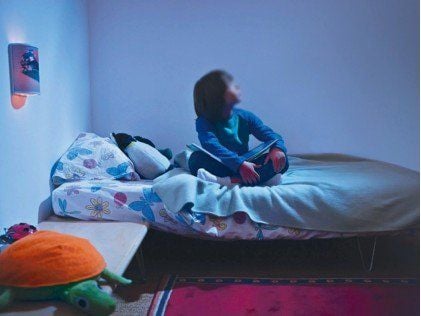
Ngáy to hay đái dầm là một trong triệu chứng của ngưng thở khi ngủ
4. Effects of untreated sleep apnea in children
Untreated apnea leads to many accompanying consequences such as:Sleep disturbance for a long time causes chronic fatigue during the day. Difficulty concentrating in school affects academic performance. Leads to behavioral problems that mimic attention deficit hyperactivity disorder (ADHD), typically hyperactivity, rebelliousness, and impulsivity. Unpleasant mood. Difficulty controlling emotions, often irritable. Children grow slowly. May cause high blood pressure, increase the risk of stroke (rare).
5. Diagnosis of sleep apnea in children
Take your child to the doctor when you suspect your child has sleep apnea. The doctor will examine the child's family history, symptoms and conduct a physical examination. Your child may have his neck, mouth and tongue checked, and adenomas.The doctor may order a number of tests to diagnose the condition including:
Polysomnogram : Doctors evaluate your child's condition during an overnight sleep study. This test uses sensors applied to the body to record brain wave activity, breathing patterns, snoring, oxygen levels, heart rate, and muscle activity while your baby sleeps. This is considered the gold standard for assessing sleep apnea because it provides the most definitive results. Oximetry: If doctors clearly suspect obstructive sleep apnea, recording a child's heart rate and blood oxygen levels as they sleep can help with the diagnosis. Oximetry can be done at home. However, sometimes it doesn't provide a diagnosis, in which case your child still needs to have a sleep study done. Electrocardiogram: In an electrocardiogram, sensor patches with attached wires (electrodes) measure the electrical impulses given off by your child's heart. Doctors can use this test to determine if your child has an underlying heart condition.
6. Treatment of sleep apnea in children:
Treatments for sleep apnea in children depend on the cause and severity of the symptoms. Your doctor will consider it to come up with an appropriate treatment plan for your child.Medications: Topical steroids for the nose, such as fluticasone (Dymista) and budesonide (Rhinocort, Pulmicort Flexhaler, others), can ease symptoms of sleep apnea in some children with apnea. Sleep breathing due to mild obstruction. For children with allergies, montelukast (Singulair) may help relieve symptoms when used alone or with nasal steroids. Removal of tonsils and adenoids. For moderate to severe sleep apnea, your doctor may refer your child to a pediatric otolaryngologist for a checkup on removing tonsils and adenoids. Removal of the accessory gland may improve obstructive sleep apnea. Other forms of upper airway surgery may be recommended, based on the child's condition. Intensive airway pressure therapy: In continuous positive airway pressure (CPAP) and biliary positive airway pressure (BPAP), small machines gently blow air through a tube and mask attached to the nose, or into your child's mouth. The machine puts air pressure into the back of your child's throat to keep your child's airway open. Doctors often treat obstructive sleep apnea in children with aggressive airway pressure therapy when medications or removal of adenomas and tonsils don't work. Orthodontics: Upper jaw extenders and lower jaw lifters are orthodontic treatments that use dental hardware to create more space in the mouth and improve airflow through the airways. Occupational therapy: Mouth and throat exercises, also known as "muscle therapy" or "pharyngeal exercises," have been shown to improve sleep apnea caused by sleep apnea. Obstruction and snoring in children. In addition, children with very mild symptoms or no symptoms can be monitored over time. Supportive care during follow-up includes education about good sleep habits, close monitoring of symptoms, and regular follow-up visits.
Some natural remedies to help treat mild sleep apnea in children:
Weight loss: In obese children with obstructive sleep apnea, weight loss can alleviate the symptoms. symptom. Your pediatrician will advise you on a healthy eating and exercise plan to help your child lose weight. Avoid allergens: Avoid exposing your child to allergens such as pollen and molds - which can cause allergic rhinitis (an allergic reaction of the nasal passages). Allergic rhinitis leads to obstruction and restriction of the airways, contributing to the symptoms of sleep apnea. Nose breathing: Nose breathing training (also called mechanotherapy) is a type of physical therapy that strengthens the tongue and surrounding muscles to help children breathe more efficiently at night. It may help relieve symptoms, but there are no formal studies that demonstrate high results with this method. However, it is not harmful to children, so you can still apply it. Position therapy - training a person to sleep in a different position. It can be used in children when apnea occurs when the child sleeps on their back. Elevating the head of the bed can also help alleviate sleep apnea. There are also no studies that prove the long-term effectiveness of this method.
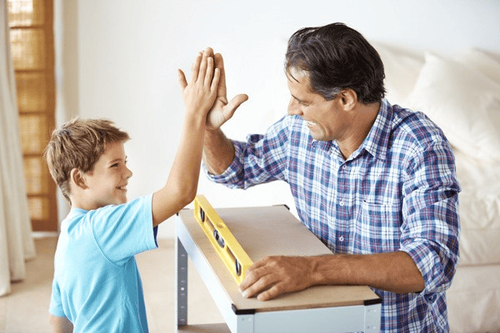
Nếu không được điều trị, chứng ngưng thở khi ngủ có thể ảnh hưởng đến cuộc sống của con bạn
7. What are the prospects for treating apnea in children?
When properly treated, sleep apnea is markedly reduced for many children. Surgery eliminates symptoms of obstructive sleep apnea in about 70 to 90 percent of children with enlarged tonsils and adenomas. Likewise, some children with either type of sleep apnea notice an improvement in symptoms with weight management or the use of a continuous positive airway pressure (CPAP) ventilator or oral device.If left untreated, sleep apnea can get worse and affect your child's quality of life. In the long run, children are at risk for life-threatening complications such as stroke or heart disease.
Currently, Vinmec provides a screening program for Sleep Apnea Syndrome for adults and children, when the baby has suspicious symptoms of the disease, parents should take the child to Vinmec for early examination. The apnea syndrome screening package will perform clinical examinations and respiratory investigations during sleep to detect the symptoms of apnea, hypopnea, and hypoxemia during sleep of at-risk subjects. Diagnose sleep apnea syndrome and provide treatment.
When you sign up for a screening package for sleep apnea syndrome, your baby will get:
Clinical Examination Respiratory Clinical Examination Ear Nose Throat Pulmonary Pulmonary Pulmonary Pulmonary Disease Pulmonary Pulmonary Disease Pulmonary Health Care Center. consulting, analyzing results, giving the most appropriate diagnosis and treatment method. The Pediatrics Department at Vinmec is also one of the few hospitals in Vietnam that has a full range of respiratory, cardiovascular, and neurological specialists right at the Pediatric Department, who are well-trained, in-depth, and experienced. The baby will be treated right at the Pediatric Department without having to switch departments many times during treatment. As a result, it helps to increase the effectiveness of the treatment and shorten the treatment time.
If there is a need for examination and treatment of sleep apnea for children, please register online at Vinmec website or contact the hotline for detailed advice.
Please dial HOTLINE for more information or register for an appointment HERE. Download MyVinmec app to make appointments faster and to manage your bookings easily.
References: babycenter.com, mayoclinic.org, sleepfoundation.org, healthline.com



